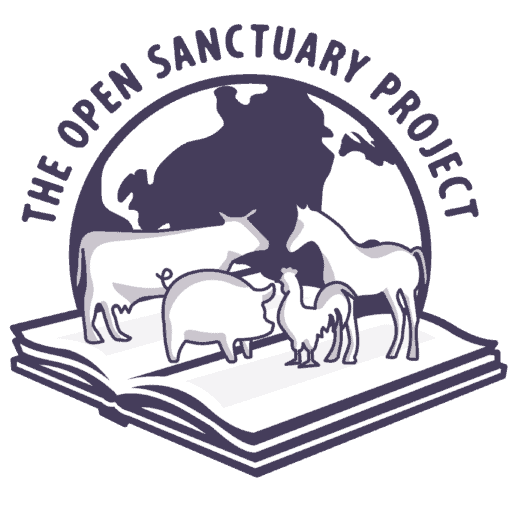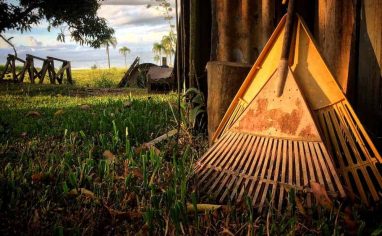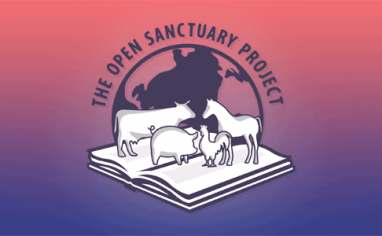
Subscribe To The Open Sanctuary Podcast
If you’d like to get the latest episodes of The Open Sanctuary Podcast, you can subscribe for free on all Podcast platforms, including Apple Podcasts and Spotify!
Episode Notes
Executive DirectorThe individual formally in charge of final decision making at an organization, who sometimes works closely with the organization’s Board of Directors. Sometimes a Founder is an Executive Director, especially early in a nonprofit’s growth stages. Mckenzee and NonprofitA non-governmental organization whose primary purpose is something other than selling goods or services. Specialist Julia discuss contingency planning! We discuss the common challenges individuals face when it comes to contingency planning, as well as the various types of events that your organization should prepare for, including organizational challenges, operational challenges, and resident challenges. We offer a simple framework for you and your team to use, which hopefully might help take some of the stress out of it!
—
This Episode’s Referenced Open Sanctuary Project Resources:
- Creating An Effective Set Of Contingency Plans For Your Animal Sanctuary | The Open Sanctuary Project
- The Open Sanctuary Project’s Contingency Planning Workbook | The Open Sanctuary Project
Episode Transcript (Auto-Generated)
Here is a direct transcript of the podcast episode, with speakers separated and grammatical/spelling errors corrected:
Julia Magnus: Welcome to another episode of the Open Sanctuary Podcast. I’m Julia Magnus, the nonprofit specialist, and I’m chatting with my friend and executive director Mckenzee Griffler. For the past three episodes of this podcast, we’ve been discussing succession planning. Since succession planning is actually a subset of contingency planning, it feels appropriate that we also dedicate an episode to talking about contingency planning, which is yet another critical step that your organization can take towards long-term sustainability. So, Mckenzee, what exactly is contingency planning in the context of an animal sanctuary?
Mckenzee Griffler: Great question, Julia. So, at Open Sanctuary, we describe contingency planning as thinking about and writing out actionable strategies to manage events and challenges before they ever happen. It’s essentially a formal or informal course of action planned for certain events, especially emergencies. And these plans need to be easily accessible and implementable by any qualified personnel available within a short window of time to maximize your effectiveness. You need something quick and clear when an emergency hits, not a five-page manual that you have to pore over. The idea is something happens, we know what to do. And in a lot of emergency or even cautious events at a sanctuary, time really changes every outcome. And that’s why we think it’s really important.
Julia Magnus: Totally agree. So, contingency planning, like succession planning, can be challenging for animal organizations. And in fact, when we were talking about succession planning, I think we spent one entire episode talking about how emotionally challenging that can be. So, what do we briefly talk about some of the challenges that folks might face when they’re embarking on this project of contingency planning?
Mckenzee Griffler: I think it’s definitely one area where people, especially those in the sanctuary community, tend to drag their feet. As we mentioned in our sanctuary succession planning resources and podcasts, it’s very similar to how someone might put off creating their own personal will. And there’s just so much to do in a sanctuary already: animal care, maintenance, fundraising, organizational tasks, volunteer management. So, unless an emergency is literally happening, it can feel incredibly hard to budget the time to sit down and plan for hypothetical bad events. It can also feel really scary and big because you have to think, well, how could I possibly plan for everything that could happen? And in some ways, just thinking about things to worry about is kind of an anxious process because what you’re doing is ruminating on bad things that you don’t want to happen. But unfortunately, the best way to have plans for bad things that might happen is to create plans for bad things that might happen.
Julia Magnus: Mhm. Yes. So, you know, to those of our audience who may be thinking, “Oh, no. I really, really don’t want to do this.” What are some things to help motivate them?
Mckenzee Griffler: Sometimes the stress of anticipating a task like contingency planning can actually be alleviated by just starting on it. Ideally, organizations should start their contingency planning at their inception. But it’s never too late to start. Let me break down one way to think about it. What if you just envisioned the literal most likely emergency that your organization might face and then work down through less likely but still possible events? The key is to have a conversation and create a very simple structure. Even a contingency planA formal or informal course of action planned for certain events, especially emergencies that a sanctuary might face. that seems overly simple is so much better than having nothing at all. And the stakes are incredibly high. We’re talking about resident lives and even caregiverSomeone who provides daily care, specifically for animal residents at an animal sanctuary, shelter, or rescue. lives at stake sometimes. In an emergency, you don’t have time to process things or figure things out from scratch. Everything listed in your plan needs to be a very quick, actionable thing. And creating those plans ahead of time could very potentially save a lot of lives. The reality we face now is that beyond immediate emergencies, there are likely a number of events completely outside of your control, which may impact your sanctuary’s operations. Climate change, for instance, is bringing on more large-scale events like wildfires and flooding. So, planning is more important than ever. By thinking about and crafting these plans, which you’ll hopefully never have to use, you’re taking invaluable steps to protect your residents, your organization, and yourself. And that in itself is a major stress reliever.
Julia Magnus: So, now that we know why it’s important and why it’s hard but necessary, can we dive into a little bit more detail about what kinds of things sanctuaries should be planning for? I know our resources on this subject, which are as always linked in the show notes, break contingency planning down into broad categories. Maybe you can describe these.
Mckenzee Griffler: Sure. The three main categories are organizational challenges, operational challenges, and resident challenges. These categories contain a diverse set of potential issues that could really catch a sanctuary off guard if they haven’t thought about how they would react. Note that these categories are not an exhaustive list, and each sanctuary will have unique challenges based on their location, climate, jurisdiction, and even the specific animals they care for. Starting with organizational challenges, these focus on the human and administrative aspects of the sanctuary. They might include things like your founderSomeone who starts an organization. A Founder may or may not also be the Executive Director of an organization. or chief caregiver is incapacitated or quits unexpectedly. This is huge for many sanctuaries. So huge that we just finished a series of three podcasts on this subject alone. Another one might be a volunteer, visitor, or staff member threatens legal action, or your sanctuary faces a legal challenge regarding zoning or animal abuse accusations, or a neighbor files a complaint against the sanctuary, or your organization gets inaccurately or unfairly portrayed in a highly visible news story, or law enforcement accuses you of illegally obtaining a resident. So again, there are so many different things that can fit in this category, and I’m pretty sure for a lot of organizations some of these might feel more possible than others. So start with the ones that are more possible. And as we mentioned, the founder/chief caregiver issue suddenly being unable or unwilling to continue in their role, that’s again something we talked about for three episodes. So you can check those out to get some assistance with that kind of planning, and that’s known as succession planning. So if you start with that challenge, it’s both kind of an A1 priority when it comes to contingency planning, and you’re freeing two birds from one cage. So, we recommend it as a good place to start. What about the second broad category of contingency planning, operational challenges?
Julia Magnus: Operational challenges deal with the day-to-day functioning of the sanctuary. So, examples here include a budget shortfall or you had a cash flow issue where you can’t afford adequate care for residents. If you rent, the landowner wants you off the property for whatever reason, or your property gets rezoned by the county and you can no longer legally shelter some or all of your residents, or your sanctuary faces vandalism, threats of violence, or theft, or a contractor doesn’t adequately perform the work you paid for. And perhaps the most obvious, a natural disaster like a blizzard, tornado, earthquake, flooding, or fire takes place. Different sanctuaries, as we just said, face different levels of risk when it comes to this kind of challenge. So, it’s a really good idea just to sit down as a team and figure out which of the risks are those that you’re actually going to face and work together to address them one by one. The next category when it comes to sanctuary contingency planning is resident challenges, which is a critical area for keeping resident animals safe. Can you list some of the potential resident challenges that a sanctuary might want to anticipate and plan for?
Mckenzee Griffler: So, there could be a lot of these, especially depending on the types of species that you’re caring for, the individuals, all of those good things. But some that might be in a contingency planning list might include a resident injures a human, or a human injures a resident, or a contagious disease outbreak strikes some residents, or a resident faces a catastrophic health emergency that they can’t recover from, or a resident is too confrontationalBehaviors such as chasing, cornering, biting, kicking, problematic mounting, or otherwise engaging in consistent behavior that may cause mental or physical discomfort or injury to another individual, or using these behaviors to block an individual's access to resources such as food, water, shade, shelter, or other residents. to keep with others safely, or a resident gets impregnated unexpectedly. And of course, as we always say, sanctuaries should always take steps to try to avoid unwanted or unplanned for, or really any, pregnancies at a sanctuary, but it can happen. Another one might be you have to quickly and safely evacuate your residents from the area, or you must permanently rehomeThe act of giving an animal a new home, typically because the previous guardian cannot or will not continue to provide adequate care. some or all residents in a short period of time. This covers a lot of ground from legal issues to natural disasters to animal health crises, and so it underscores how vital it is to have a basic plan for these diverse possibilities, but really also to make sure that you talk as an entire team about which are the most likely challenges that your organization might face and the best way that your unique team can plan to face them should they occur. So for instance, if you’re a micro sanctuary and you care for two chicken residents in your apartment, a lot of these things are not going to apply to you as an animal caregiver. For myself in an apartment, I have a contingency plan that involves having two carriers that are always ready so that my residents can leave if there’s a fire challenge or something. And that is a contingency plan. It’s not very complicated. So to underscore, these things don’t have to be these hugely elaborate things, but I do have a plan in place in case something happens that I can take action. It’s just applying that to the broader framework of what your sanctuary might face.
Julia Magnus: I’m so glad you said that just because I think the term contingency planning scares people and makes them think, oh no, like this should be a binder with tabs and indexes and no, it can be as simple as make sure you have carriers and know where they are. So, I’m glad because I do think that when folks start doing this, they will find that it’s easier than they might think. So, once you’ve identified these potential events like the ones you’ve listed, how do you actually write the contingency plans? Our resources do offer clear guidance starting with making the plans concise, easy to reference, and with clear guidelines for handling each event. But what are some other tips and tricks here?
Mckenzee Griffler: I think every sanctuary’s contingency planning pages could look different, which would be totally fine. We’ve kind of created a very simple framework, and I think there’s a lot of benefit in a simple framework, which means that anyone who has access to them will hopefully be able to start putting a plan into place, and the format that we’ve come up with I think helps also facilitate that. Contingency plans should include people and their contact information alongside each plan if necessary. For example, if you plan to use a volunteer’s truck and trailer for an evacuation, you need to have their name and contact information readily available. If you have an agreement with another sanctuary for temporary rehoming, you need their point of contact. Basically, a very simple format for structuring these plans is an event, what you do, and contacts. So, let’s look at some of the examples given in our resources so you can get an idea. Event: A wildfire is threatening the sanctuary. Actions: Call Sharice, Landry, and Steve, and inform them that you are initiating a wildfire evacuation. Gather birds and place in Steve’s van. Load sheep and goats into Sharice’s trailer. Perform a headcount before leaving. Take residents to Landry’s spare paddock. Contacts: Sharice, phone number, email. Steve, phone number, email. Landry, phone number, email.
Julia Magnus: Notice how specific and actionable that is. It’s not vague. It tells you who to call and what specific steps to take.
Mckenzee Griffler: Exactly. Because the point is that whoever is going to get involved to put a plan into action has everything they need. They don’t need to go ask a million more people a million more questions. They don’t need to go look through a series of handbooks. They can just start making decisions and they can start actioning them. To take another example from our resource, event: The head of the organization is incapacitated and cannot be communicated with. Action: Call key staff and assess current needs. Ensure staff has access to all mission-critical contacts. Make Shanti operating head of the organization until an all-staff meeting is held. Contact: key staff contact information for each member. Shanti, phone number. This format makes it so clear what needs to happen and who is involved. And we also do want to mention that we have a downloadable workbook that helps sanctuaries go through a structured process when it comes to contingency planning. It’s designed for staff to work on together, brainstorming their concerns and creating practical solutions. Can you talk about that a little bit more?
Mckenzee Griffler: Sure. The workbook outlines a very simple process. One, think about challenging events that could happen. And we always say aim for at least 10 to start. Brainstorm broadly across natural disasters, resident issues, personnel, and public concerns. Two, for each event, briefly list the first three actions your sanctuary will take. Be very specific. Three, list the contact information for at least three critical individuals or organizations for each event. Also, list necessary equipment or supplies and where to find them. And then the process doesn’t stop there. The workbook encourages you to continue brainstorming more events after the initial 10. Get input from different team members as they will most likely think of things that you didn’t think about. You can always pare down the list later if there are things on there that just feel like, I just couldn’t get to 10 on this. And that’s okay. Once you feel like you have a good list and you’ve nicely outlined the actions and contacts for each, the next step is to create an accessible contingency plan binder. The resources recommend organizing it by categories that make sense for your sanctuary like natural disasters, public challenges, staff challenges, resident challenges, and so forth. The key is to make it easy access so all of the plans can be put to action instantly. And once you have this beautiful binder, one, make copies of it. You know, keep it in a Google Drive link that everyone who’s involved with your sanctuary knows about. So it’s publicly put it in multiple parts of your sanctuary. Keep it in multiple resident barns so it’s just easy to find regardless of where somebody is. And probably most importantly, as it says in the resource itself, mark it down in your calendar that you are going to as a team revisit it and make sure that it is still serving your needs, as most likely people will leave the organization. You’ll have new contacts for certain things. Situations might change at your sanctuary, at your property. Maybe you’ll move and you’ll need a different set of contingency plans. So, it’s really good. It doesn’t have to be an overwrought process, but you should have a plan in place to occasionally make sure that all of it is still relevant to how your organization functionally is. And that’s about it. It doesn’t have to be hard. If you want to go into more details on things, that’s great. But I’ve always found that personally, it’s better to create something simple that you can go above and beyond with rather than trying to start with something super complicated and then feel like you can’t do it and then you don’t do it. So just start with an easy one and then if you decide that you want it to be more fancy, make it more fancy.
Julia Magnus: Yeah, the main takeaway is pretty clear that having these plans in place and never needing them is way preferable to needing them and not having any. So it does require setting aside the time, having those conversations, and documenting these steps and contacts, but it really is an investment in the future safety and security of the residents and everyone involved with the sanctuary. So, if you’re listening and you haven’t started your contingency planning, or if your plans haven’t been updated in a while, I hope this podcast made the process sound a little less intimidating and make you feel a little more able to take that first step today. Just brainstorm one potential event and think about the first few actions and who you’d call. Consider also reaching out to and consulting others in the sanctuary community on their plans, particularly sanctuaries in your area, because they can potentially share their own plans as food for thought. They may share some similar challenges if you’re in an area that’s prone to wildfire. It can help you to look at another organization’s plan and even coordinate together. Again, you can find all the resources that we’ve referenced here in our show notes. And if there are more subjects that we can cover that could be useful to you, please feel free to contact us via our contact us page at opensanctuary.org. We are always very happy to hear community feedback and we welcome suggestions for new resources. If you found this information valuable, please consider leaving a five-star review either on Apple Podcasts or on Spotify. We’ve got actually quite a nice little bandolier of five-star reviews happening and some really nice little comments and that’s really nice. We like seeing those if nothing else. And if you like what we do and it’s feasible for you and you’d like to support our work in a monetary way, we would warmly welcome a donation. We are a 501c3 organization. So your donations are tax-deductible in these United States and help us sustain our missionThe stated goals and activities of an organization. An animal sanctuary’s mission is commonly focused on objectives such as animal rescue and public advocacy. of providing freely accessible resources so that every sanctuary is a success story. Thank you for listening. Thanks for your support, and we look forward to talking to you next time.

Got A Podcast Idea? Contact Us!
If you have a topic or question you’d love to hear our staff address on The Open Sanctuary Podcast, please get in touch via our contact form!






